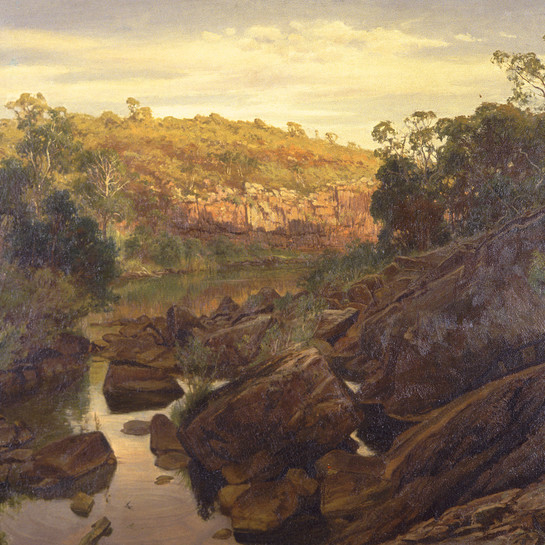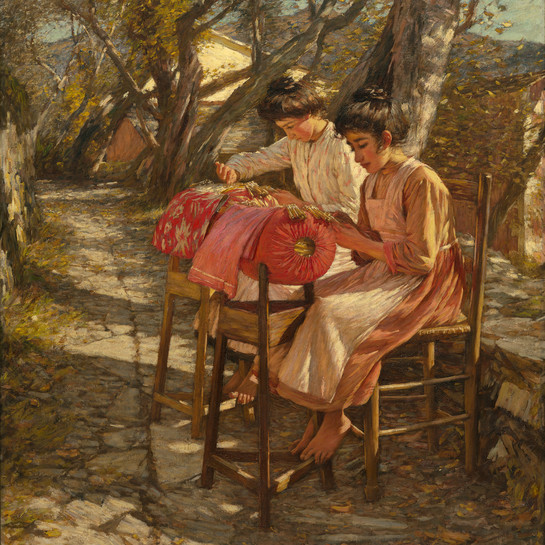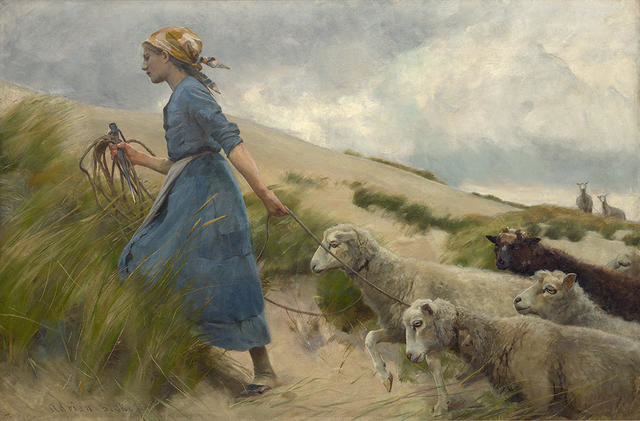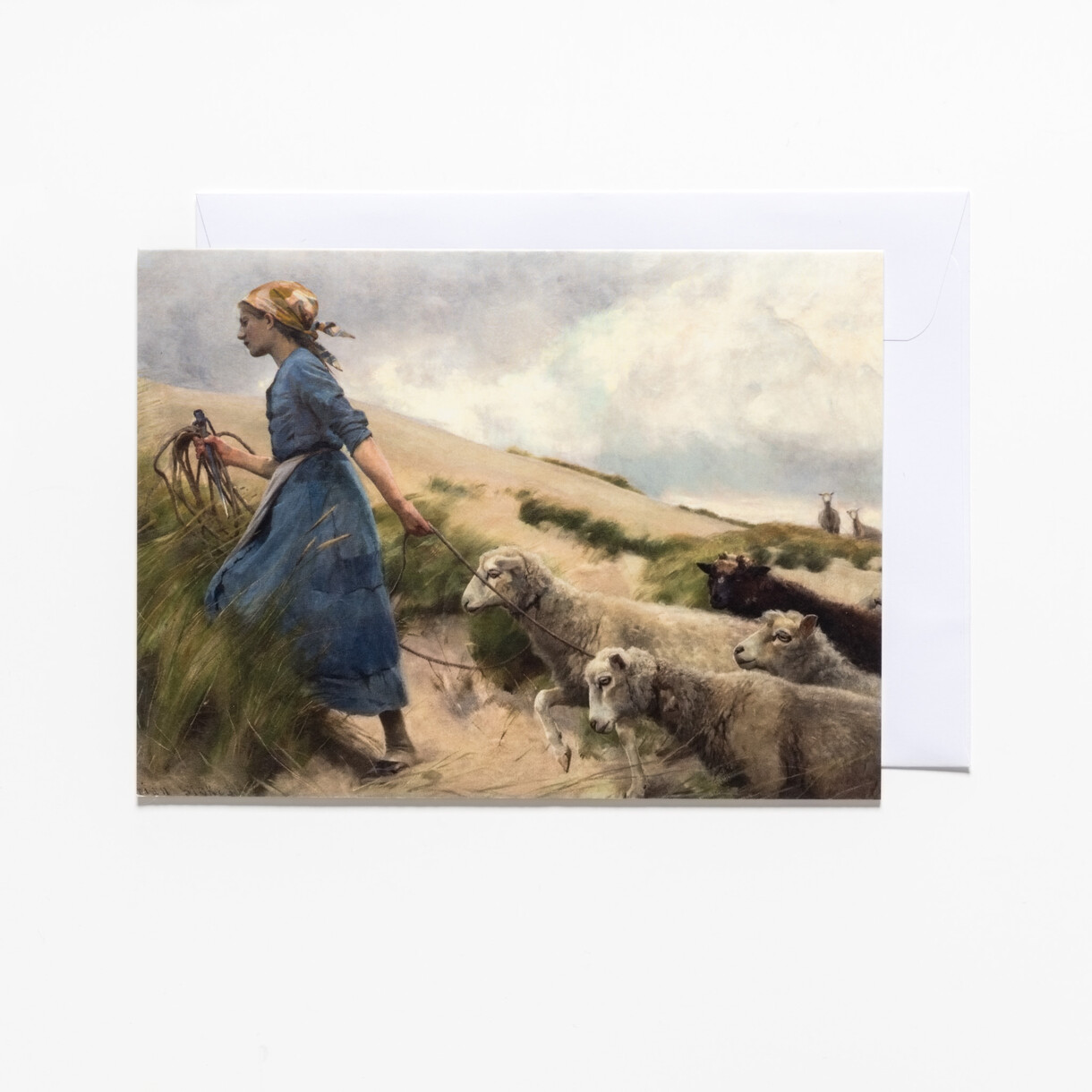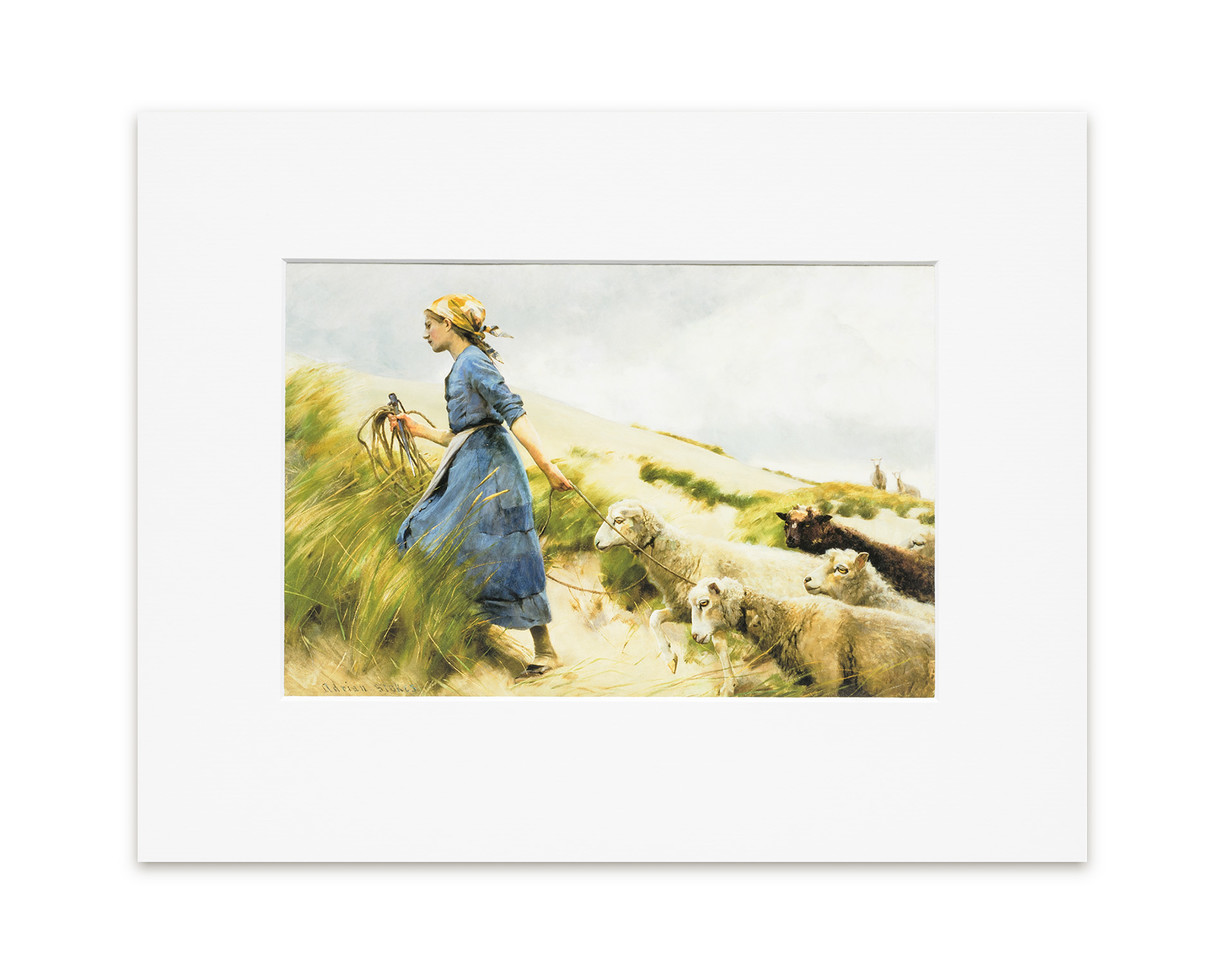Adrian Stokes
British, b.1854, d.1935
Among the Sandhills [also known as In the Sandhills, Jutland]
- c. 1885
- Oil on canvas
- Presented by the Canterbury Society of Arts, 1932
- 1040 x 1465 x 80mm
- 69/373
- View on google maps
Tags: animals, aprons (protective wear), clouds, dresses (garments), dunes, headscarves, hills, plants (living organisms), rope, sand, sheep, shepherds, women (female humans)
The search by many late nineteenth-century European painters for ‘picturesque’ peasant workers going about their everyday lives led to the establishment of artists’ colonies in coastal or rural settings. Rather than an ‘authentic’ local, however, Adrian Stokes modelled his painting of a young shepherdess walking up a windswept dune on his wife, Austrian-born painter Marianne Preindlsberger. The couple had met at the artists’ colony of Pont-Aven, in Brittany, in 1883, and married in the following year. Stokes painted this during their stay at an artists’ colony in Skagen, a fishing village on a rugged peninsula at Denmark’s northernmost tip, where they spent the summers of 1885 and 1886.
(Leaving for work, 2 October 2021 - 1 May 2022)
Exhibition History
Endless Light, 29 June 2019 – 8 March 2020
Adrian Stokes was well regarded for his treatment of landscapes and working life, a popular subject for nineteenth-century painters. He painted In the Sandhills, Jutland while he and his wife, artist Marianne Preindlsberger, were on a residency at the artists’ colony in Skagen, a fishing village on Denmark’s northern tip. A woman manages a scattered herd under rolling clouds that diffuse the luminosity of a midday sun, the overall flatness of the light leaving only the lightest of shadows. A flat, overcast light can also illuminate colours, and Stokes’s blue, green and earth tones all chime and glow subtly in unison to suggest the sights, sounds and even smells of the sea.
The Weight of Sunlight, 15 September 2017 – 19 August 2018
In 1876, while in his early twenties, the English painter Adrian Stokes settled at Pont-Aven, an artist colony in Brittany, France, where he later met his life and painting companion, Austrian-born Marianne Preindlsberger. Marianne arrived in the summer of 1883, and they married in Austria in the following summer. After an extended honeymoon on the island of Capri, Italy and in Ireland, the Stokeses spent the next two summers (1885–86) as part of the artist colony at Skagen, a fishing village on a rugged peninsula at Denmark’s northernmost tip. Adrian Stokes’s painting of a Danish shepherdess was shown at the Grosvenor Gallery’s 1887 summer exhibition in London as In the Sandhills, Jutland. It was exhibited again in 1887 in Liverpool; in Melbourne (with an amended title) for the 1889 Centennial International Exhibition; and Dunedin at the 1889–90 New Zealand and South Seas Exhibition. It was purchased by Captain Christopher Garsia, a founding member of the Canterbury Society of Arts, who sold it to the society in 1902.
Adrian Stokes probably painted Among the Sandhills from studies made on the Jutland coast in Denmark. He has captured the atmosphere of the scene, with the moving clouds and the suggestion of a coastal breeze swaying the dune grasses. In subject matter and style the work shows similarities to that of the British Newlyn School. This painting was on loan for many years to the old homestead at Mona Vale, in Christchurch, where it was a popular background for numerous wedding photographs. The painting came to New Zealand in 1889 for the New Zealand and South Seas Exhibition in Dunedin. Born in Southport, England, Stokes originally trained as a cotton broker before John Herbert of the Royal Academy encouraged him to submit drawings to the Academy. Stokes entered the Royal Academy Schools in 1872 and began exhibiting at the Academy in 1876. He worked for nine years on the Brittany coast of France but eventually returned to England, settling in St Ives, Cornwall.
(Gallery opening hang, 2003)

